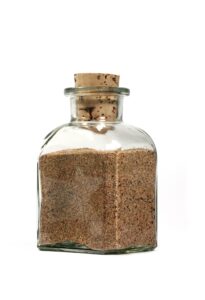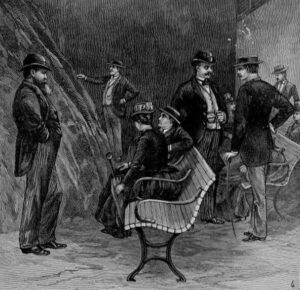Henry Rowe Stevens was a respected veterinary surgeon and farrier who spent the first 20 years of his career at Newmarket before moving to London in the 1850s. His adverts suggest that he had a humane and progressive outlook, as he condemned the traditional practice of firing (i.e. placing a red-hot iron against the leg in an attempt to stimulate tendon repair). Mr Stevens also advocated the new Charlier System of farriery, which used lightweight shoes around the front of the hoof, rather than the very heavy, close-nailed iron plates previously in use.
Image: Thorough Bred by H. Hardy. 1888
.
STEVENS’S OINTMENT the only substitute
for firing horses, after twenty-five years’ extensive use, retains its
celebrity as the safest and best remedy for curbs, splints, spavins, sore
shins, diseased ligaments or tendons in the horse; it never blemishes, may
be applied during work, and no horse will gnaw its legs after applica-
tion.—Prepared only and sold by Henry R. Stevens, Veterinary Surgeon,
No. 8a, Park-lane, in boxes, 2s. 6d. each; or free by post, 3s. Sold also
by Barclay and Sons, 96, Farringdon-street, and all Druggists.
Source: The Era (London) Sat 23rd Feb 1862
Mr Stevens did not manage to keep out of trouble through the whole of his 40-year veterinary career. In 1861 he was sued for negligence after an unfortunate accident when a horse caught its eye on a hook in his forge.
The court heard that the horse “had hung back during shoeing; and one of the men had hit it with the flat side of a hammer, and the other with a twitch-stick, to make it go forward.” Although another vet gave the opinion that the horse had permanently lost the sight in that eye, it did eventually recover. Mr Stevens was ordered to pay 20 guineas in damages to the horse’s owner.



